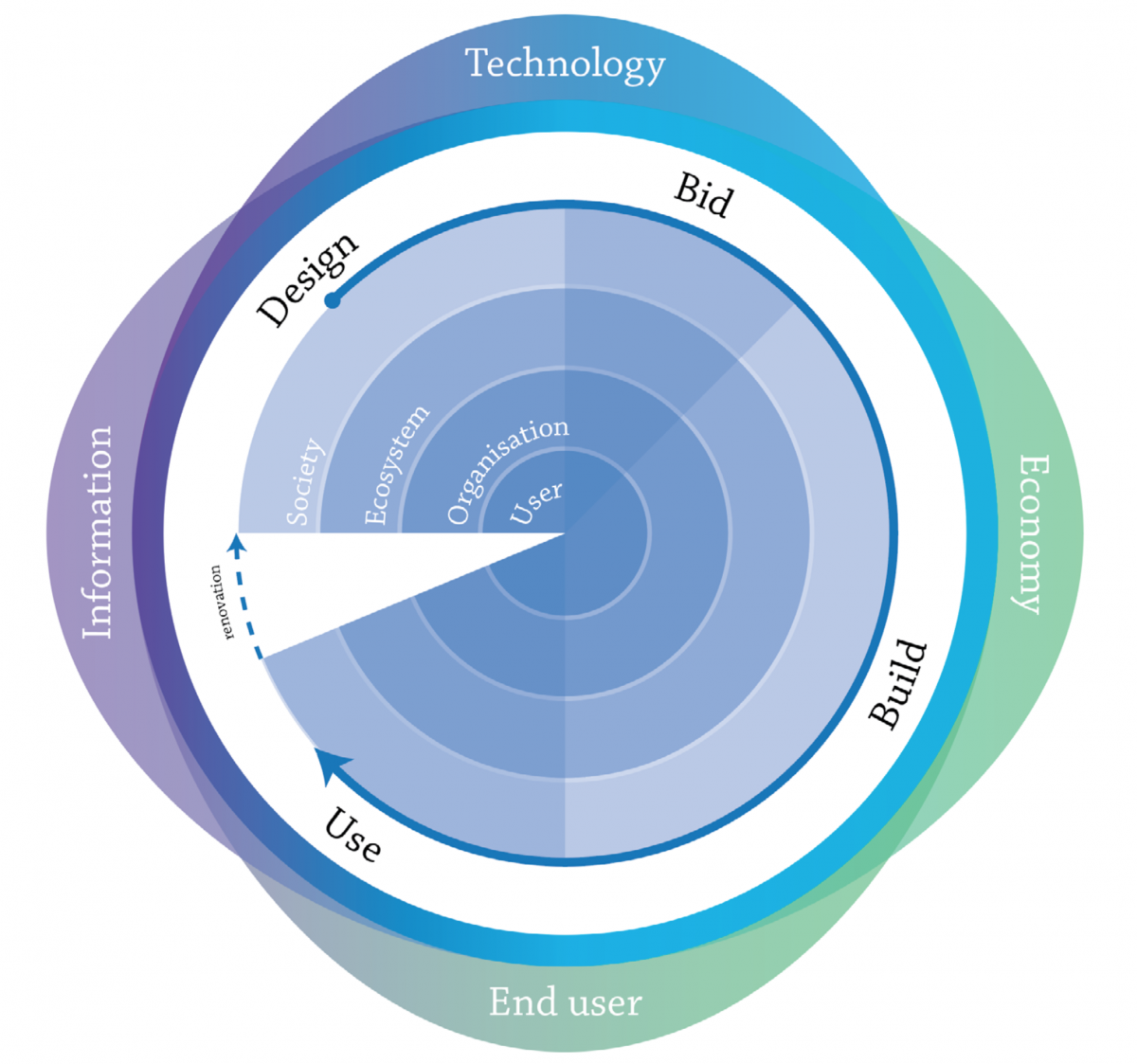The method and study are part of my doctoral thesis p. 58-69
The OpenAIS project. worked on adopting the IoT paradigm into professional lighting. This can be a disruptive technology for existing value chains, which needed to be understood. This is where I entered.
Opportunity
Adopting the Internet of Things paradigm in lighting systems will impact existing value chains significantly. OpenAIS wanted an impact analysis of their technology. This was an opportunity for developing a method that can help other domains with identifying potential IoT impact on their value chains.
Result
The resulting method is called the Layered Value Method. It can be used to facilitate systematic impact analysis of IoT technology on a wide range of value- and supply chains.
Background
OpenAIS required an impact analysis on the European lighting value chain. As task leader, I approached this task as a design researcher, with a general IoT impact analysis method as end-goal.
At the start of the project, we interviewed 28 professionals working at leading companies in the lighting and IoT value chains to construct a model of the existing value chains. We gathered potential impacts from their point of view and to sketch potential new value chains. After completion of the project, I organised several workshops with stakeholders to reassess these impacts and start with the construction of the impact analysis method.
The Method
The Layered Value Method (LVM) is a novel method to facilitate systemic impact analysis and joint value creation for IoT systems.
The process of impact analysis is performed in two steps. First, the existing stakeholder network is modelled using the layered value network model. Second, potential points of impact on the stakeholder network are identified using four perspectives on IoT impact.
1. Stakeholder network modelling
IoT systems have complex network of stakeholders. In order to identify potential impact it is necessary to first understand the complex network of involved stakeholders. The layered value network model can be used to map out the stakeholder network in four steps.

- Identify actors and their roles
- Define the level of their contributed value (value for the User, Organisations, Ecosystem, or Society)
- Define their involvement in the project phase (Design, Bid, Build, and Use phase)
- Specify the value flows

2. Identifying potential impact
With a thorough understanding of the stakeholder network, it is possible to systematically identify potential impact per stakeholder, per phase of the project, or the level of contributed value. To facilitate this process, I defined four perspectives on IoT impact looking at IoT from a Technology-, Information, Economy, and End-user perspective. Each perspective contains a key driver and reflective questions to further facilitate discussion.

Results
The project helped me to appreciate the complexity of stakeholder networks of modern systems. The resulting Layered Value Method has proven to be a useful tool for understanding these networks and for understanding how they might be impacted by the Internet of Things.
